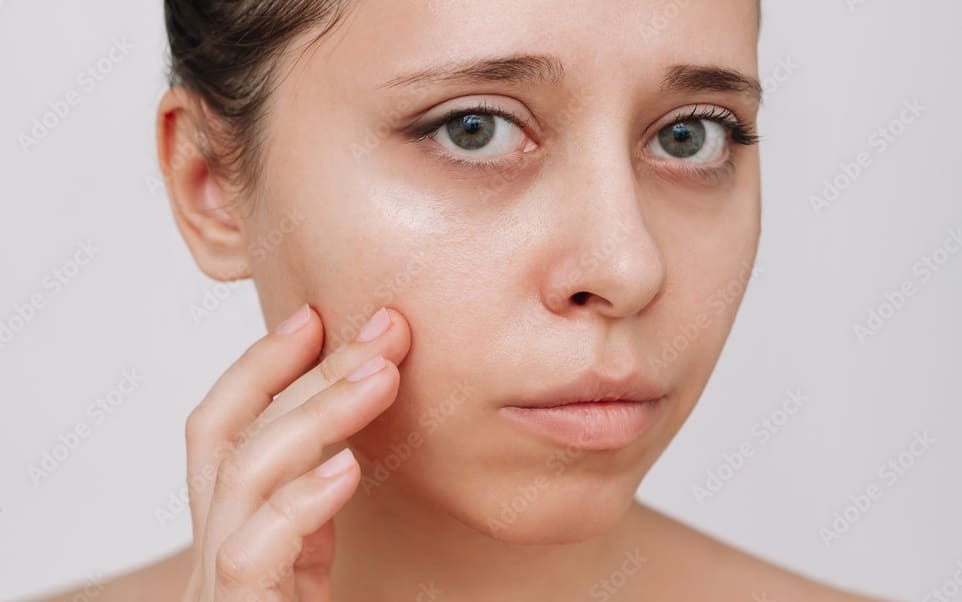Do you ever feel like your face is constantly sticky, no matter how many times you wash it? That unpleasant tacky sensation can be frustrating, especially when you’re out and about or trying to apply makeup. But don’t worry—you’re not alone! The good news is that there are simple ways to keep your skin fresh, dry, and comfortable. Let’s explore why your face might feel sticky and how to fix it.
Why Does Your Face Feel Sticky?
There are several reasons why your face might have a persistently sticky feeling:
- Excess Sebum Production: Your skin naturally produces oil (sebum) to keep it moisturized. However, overproduction can leave your face feeling greasy and sticky, especially in oily or combination skin types.
- Humidity and Weather Conditions: Hot and humid weather increases sweat production, making your skin feel damp and sticky. People living in tropical or summer-prone regions may experience this more frequently.
- Incorrect Skincare Products: Using heavy creams or products that don’t suit your skin type can leave a residue that feels sticky. Thick lotions or occlusive formulas might not absorb well, especially for those with oily skin.
- Product Buildup: Not properly cleansing your face can result in leftover residue from skincare and makeup, causing a tacky feeling. Sunscreen, foundation, and serums may accumulate if not thoroughly washed off.
- Dehydrated Skin: When your skin lacks hydration, it may try to overcompensate by producing more oil, leading to a sticky sensation. Drinking insufficient water or using harsh cleansers can contribute to dehydration.
- Allergic Reactions or Sensitivity: Sometimes, a sticky sensation may be due to irritation or an allergic reaction to specific ingredients in skincare or makeup products.
14 Tips to Keep Your Face Fresh and Non-Sticky
1. Use a Lightweight Cleanser
A good cleansing routine is crucial. Use a gentle, foaming cleanser that effectively removes excess oil and dirt without over-drying your skin. Washing your face twice a day (morning and night) can help prevent buildup. If you have acne-prone or oily skin, opt for cleansers with salicylic acid or tea tree oil to control sebum production.
2. Apply an Oil-Free Moisturizer
Even if your skin feels sticky, skipping moisturizer isn’t the solution. Instead, opt for an oil-free, lightweight, and non-comedogenic moisturizer that hydrates without adding greasiness. Gel-based or water-based moisturizers work best for oily or combination skin types.
3. Exfoliate Regularly
Exfoliation helps remove dead skin cells and excess oil that contribute to stickiness. Use a mild exfoliant (like one with salicylic acid or glycolic acid) 2-3 times a week to keep your skin fresh. Avoid over-exfoliating, as it can strip natural oils and trigger even more sebum production.
4. Choose the Right Skincare Products
Avoid heavy creams and greasy lotions. Instead, look for water-based or gel-based formulas that absorb quickly and leave your skin feeling fresh. Check ingredient labels for non-comedogenic and mattifying properties.
5. Use a Mattifying Toner
A toner with ingredients like witch hazel, niacinamide, or tea tree oil can help control oil production and keep your face from feeling sticky. Toners also help remove any leftover dirt and makeup, keeping your pores clear.
6. Carry Oil-Absorbing Sheets
If your face gets oily throughout the day, blotting papers or oil-absorbing sheets can quickly remove excess grease without ruining your makeup. Press the sheet gently on your face instead of rubbing to avoid spreading oil.
7. Stay Hydrated
Drinking enough water helps regulate oil production. Dehydrated skin can sometimes become overly oily, leading to that sticky feeling. Aim for at least 8 glasses of water a day, and eat water-rich foods like cucumbers, watermelon, and oranges.
8. Keep Your Environment Cool
If heat and humidity contribute to your sticky skin, use a fan, air conditioning, or even a facial mist to keep your skin feeling refreshed. Cooling facial mists with rose water or aloe vera can soothe and hydrate without adding excess oil.
9. Avoid Overwashing Your Face
Washing too often can strip your skin of natural oils, causing it to produce even more sebum. Stick to cleansing twice a day and after sweating. Overwashing can also lead to skin irritation and dehydration, making the problem worse.
10. Use a Light, Oil-Free Sunscreen
Sunscreen is essential, but some formulas can feel greasy. Look for oil-free, gel-based, or mattifying sunscreens with SPF 30 or higher to protect your skin without adding a sticky layer. Some sunscreens also have added skincare benefits, like oil control and hydration.
11. Consider Using Clay Masks
Clay masks help absorb excess oil and impurities from the skin, leaving it fresh and matte. Use a clay mask (such as bentonite or kaolin) once or twice a week for the best results.
12. Adjust Your Diet
Eating a balanced diet can impact your skin’s oil production. Reduce excessive consumption of oily and fried foods, and include more antioxidant-rich foods like leafy greens, berries, and nuts to support healthy skin.
13. Check Your Hair Products
Sometimes, hair products like oils, serums, or conditioners can transfer to your face, making your skin feel sticky. Avoid using heavy hair products near your hairline or face to prevent unwanted residue.
14. Use a Silk Pillowcase
Cotton pillowcases can trap oil and sweat, contributing to a sticky face. Switching to a silk or satin pillowcase can help reduce friction, absorb less oil, and keep your skin feeling fresh overnight.
Final Thoughts
If your face constantly feels sticky, a few simple changes in your skincare routine can make a huge difference. By choosing the right products, staying hydrated, and keeping oil production under control, you can enjoy fresh, comfortable skin all day long. Try these tips and say goodbye to that annoying sticky feeling!
Also Read:
